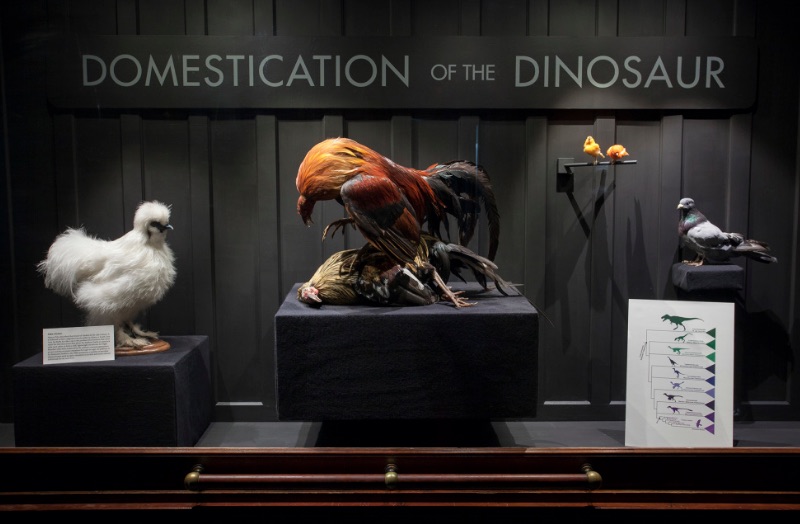
You might also like:
He started collecting and since 2012 curates The Center for PostNatural History, a small museum in the Garfield neighborhood of Pittsburgh. He says the museum is “dedicated to living organisms that have been intentionally altered by people; anything from the domestication of pets and animals, all the way through genetic engineers, synthetic biology, stuff like that.”
The first thing you see when you enter the center’s lobby is a large, genetically modified stuffed goat named Freckles. She produced spider silk in her milk in a lab in Logan, Utah. She was one of the first breeders of that line of goats that was created by man, and she happens to be the only one on display anywhere.
Pell explains there’s a massive demand for spider silk because it’s used in armor and bulletproof vests. “Spiders themselves make small quantities of it,” he said. “They resist being farmed, they eat one another, they’re anti-social. We already figured out how to farm goats, so the thinking is why not hijack the goats milk-making capacity and have it make spider silk?”
Pell also shares that there is an artist that grew human skin cells into a matrix of the goat silk. She was able to fire a bullet into it without altering the skin. She’d basically made bulletproof skin. On the museum wall, he hung a photo of Henrietta Lacks, who became an unwitting donor of cells extracted from her cancerous tumor, which were then used to craft the first human immortal cell line. The Lacks family have yet to be compensated for her contribution to medical research, some of which includes cancer research, HIV/AIDS treatments, and the polio vaccine.
There’s also an alcoholic rat, sea-monkeys, GM plants, an egg that helps create a vaccine for the flu virus, some glow-in-the-dark fish that help identify brain activity, and the testicles of a cat, which represent the forced castration of people in the early part of the 20th century. “They felt they were creating a future where you’d have no disease. You’d have no crime, no poverty — we forget that,” he explained. “They thought that humans were degenerating because of bad breeding, and that all of social inequity could be tied to genetics. Germany was paying attention, they adopted it, and it wasn’t until the end of World War II that the idea of eugenics was finally realized to be so obviously bad. But that notion that the flaws in collective character could be fixed still persists, and when you talk about gene therapy, it sort of comes back again. It’s still a complicated issue, but we haven’t learned anything from that past, we kind of erased that history.”
Through this museum, Pell is trying to encourage dialogue. The reason Freckles was able to create spider silk is the same reason forced sterilization came about: It’s all out of the shared goal for discovering something that will either tell us more about the world around us or make it better. For all the disasters, there have been a lot of good things that have come about by man intervening with nature.
“We really try to give our visitors the opportunity to form their own opinion, or even to change their mind from whatever perception it was,” said Pell. “Hopefully people leave with some nagging questions. That’s what we want. We want people to be thinking way harder about this stuff. The answers aren’t easy. They don’t fit into slogans. The political rhetoric around biotech, and all the issues that run into this stuff, have become so shrill that there’s no space for actual thinking. You’re just trying to decide what lever to pull, what flag to carry. We need a lot more nuanced thought.”
Source: matadornetwork.com



